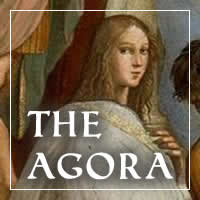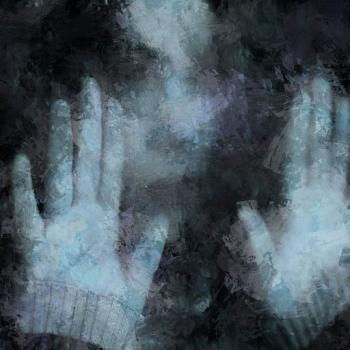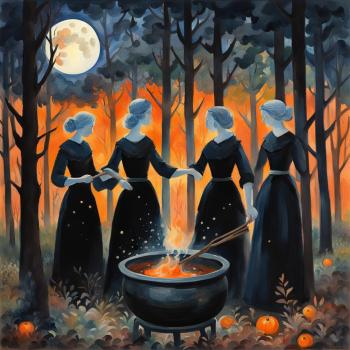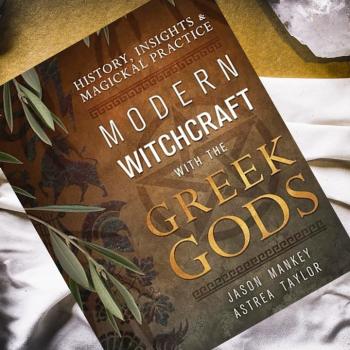In traditional witchcraft there are many clever maxims gathered from wisdom traditions worldwide. Perhaps the most pervasive and least understood advice in witchcraft is “Know thyself,” from the inscription over the entrance to the oracle at Delphi. Whereas other spiritual pursuits are not so heavily centered on self, but rather self-denial or even no self, witchcraft is about self possession. In mainstream religions we don’t often hear, “I’m a solitary,” as hermitage is a rarer calling. There are far more solitary witches than coven witches, and despite being group members we repeat another lesser known maxim, “all witches are solitary.” The ideology of being a member of this spiritual tradition alone is actually significant to the meaning of witchcraft.

Several rituals central in various forms of traditional witchcraft locate the self and its place. In Cochrane based witchcraft traditions, with the laying of the compass, the witch reaches out to the four cardinal directions, above, and below and centers within them. Soul alignment common to several traditions brings the witch’s higher self, personality, and instinctual drive into unified purpose with the celestial and terrestrial powers flowing from above and below. Both rituals place the witch at the center of the cosmos.
Self reliance built on witchcraft methods is well portrayed in the form of prayers to the self. Austin Osman Spare advocated praying to oneself through encoded messages to the subconscious in the form of sigils. In Feri tradition Ha prayers, the witch breathes mana to their god-self in service of their purpose. In Heritage witchcraft witches pray in the form of affirmations to their soul’s pair, their familiar spirit.
Witches tend to their own little pantheon of soul parts, attendant personal spirits, ancestors, and familiar spirits. With their mystical team to manage, taking responsibility for their self is key to leading wisely. The spirits who work with a witch reveal aspects of their self as often of they serve to reflect the witch’s personality.
A solitary witch has no leader making their practice for them. The witchcraft practice may be as regular or irregular as the witch alone wills; they direct their own fate, so they better know what’s best for themselves. For a witch “knowing thyself” is as integral as seeking to know a god’s plan for you in other religious system.
So how do witches get to know themselves? Some just already do, when they hear the concept they scoff like the fictional witch Granny Weatherwax and they wonder where one would find themselves but right where they are?! Others meditate and spend time sitting with themselves. Some even consider their real self so buried in shadows that they see much work to uncover and nurture who they really are. A dramatic approach is to kill the ego and start over building the self anew. It is even possible to go a little nutty trying to figure it out. I suppose the method chosen says a little about the witch too. As usual, the collector of techniques I am, I think I’ve tried them all before just realizing I’m right here and I know it.
References:
- Ethos by Austin Osman Spare
- Etheric Anatomy by Victor Anderson
- Witches Abroad by Terry Pratchett
- Laying the Compass by American Folkloric Witchcraft
- Authentic Witchcraft by Grayson Magnus
- Earth Light by RJ Stewart

Patheos Pagan on Facebook.

the Agora on Facebook
Star Made Witch is published bi-monthly on alternating Mondays here on the Agora. Subscribe via RSS or e-mail!
Please use the links to the right to keep on top of activities here on the Agora as well as across the entire Patheos Pagan channel.













